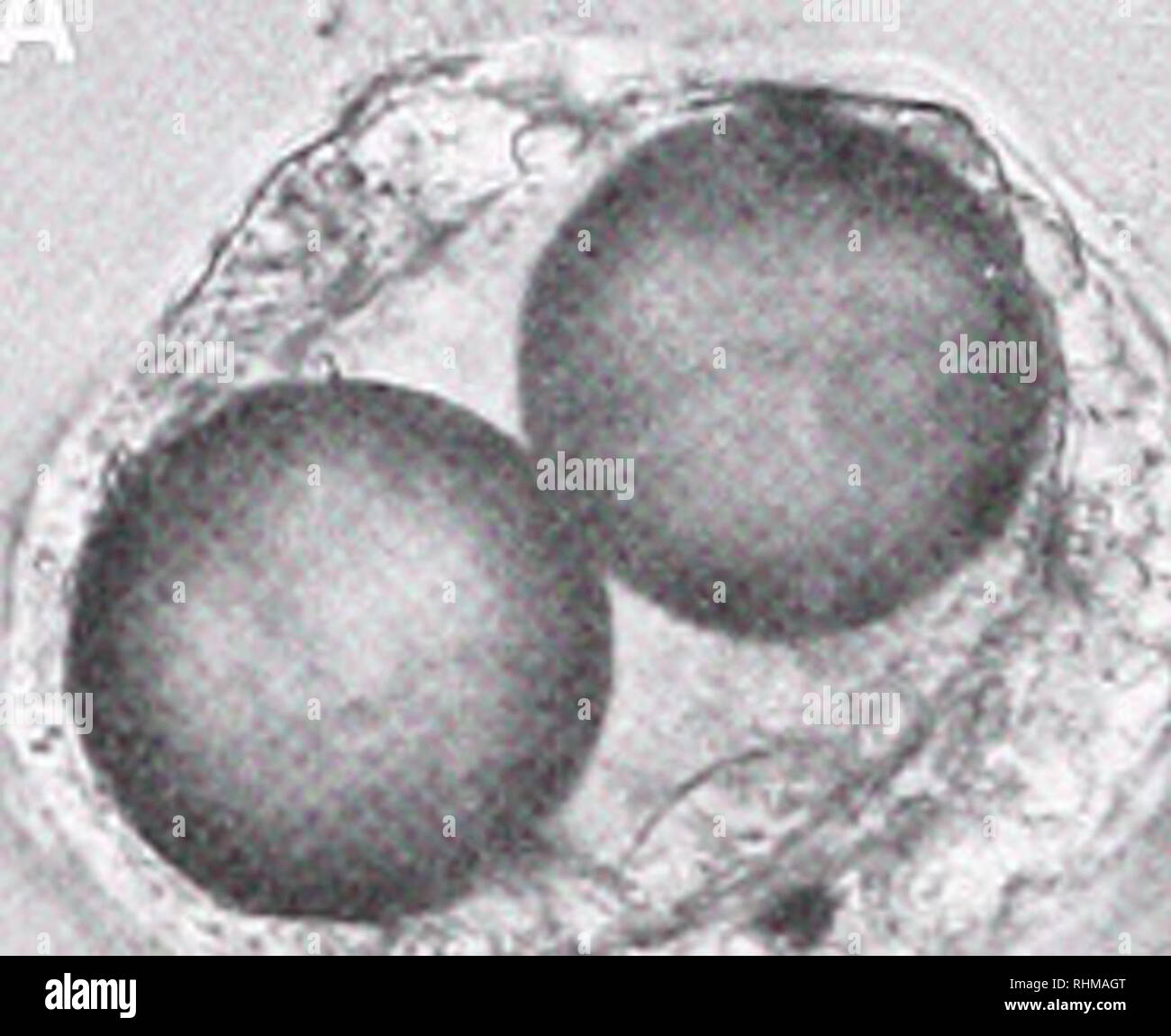. The Biological bulletin. Biology; Zoology; Biology; Marine Biology. 202 N.E. PHILLIPS AND B. PERNET Feeding by larvae r>/ Arctonoe vittata: videotaped observations Larvae of A. vittata maintained in unstirred cultures tend to become tethered to the bottom of the culture ves- sel by strands of mucus trailing from their posterior ends. We videotaped such tethered larvae in suspensions of particles to visualize particle capture and handling. About twenty 27- to 30-day-old A. vittata larvae from unstirred cultures were gently transferred to a small petri dish filled with 0.45-Mm FSW. A suspen

Image details
Contributor:
Library Book Collection / Alamy Stock PhotoImage ID:
RHMAGTFile size:
7.1 MB (223.5 KB Compressed download)Releases:
Model - no | Property - noDo I need a release?Dimensions:
1750 x 1428 px | 29.6 x 24.2 cm | 11.7 x 9.5 inches | 150dpiMore information:
This image is a public domain image, which means either that copyright has expired in the image or the copyright holder has waived their copyright. Alamy charges you a fee for access to the high resolution copy of the image.
This image could have imperfections as it’s either historical or reportage.
. The Biological bulletin. Biology; Zoology; Biology; Marine Biology. 202 N.E. PHILLIPS AND B. PERNET Feeding by larvae r>/ Arctonoe vittata: videotaped observations Larvae of A. vittata maintained in unstirred cultures tend to become tethered to the bottom of the culture ves- sel by strands of mucus trailing from their posterior ends. We videotaped such tethered larvae in suspensions of particles to visualize particle capture and handling. About twenty 27- to 30-day-old A. vittata larvae from unstirred cultures were gently transferred to a small petri dish filled with 0.45-Mm FSW. A suspension of 40-/um polystyrene beads was added, and the dish was covered with a glass microscope slide, excluding air pockets. Lar- vae in the dish were examined with a dissecting micro- scope equipped with a Sony HVM-200 video camera linked to a video recorder and monitor. Larvae that were tethered (little or no forward motion) but that continued to rotate normally were videotaped at a magnification of 40x. Larvae and seawater were changed every 30 min to minimize the effects of temperature increases. Although tethering undoubtedly influenced patterns of flow around larvae (e.g., Emlet, 1990), it probably did not affect qualitative aspects of the mode of feeding that we describe. Measurements of larvae Eight-day-old and 18-day-old larvae were immobi- lized with a small amount of polyethylene oxide in sea- water and examined alive with a compound microscope. c/) -D 03 CD .Q T3 CD •i—> a. 03 o ~03 •i—i O 100 80 60 40 20 0 ] Serpula vermicularis H Arctonoe vittata .I B, .—B, •, I 10 20 40 bead diameter (jam) Figure 2. Percentage of beads in each size class captured by 8-day- old larvae of Arclanoc YHUIUI and Serpula vermicularis in the bead- feeding experiment. Fifty-four A. viiuun larvae ingested a total of I 14 heads; fifty-two S n'riniciiluri.'i larvae ingested a total of 116 beads.. Please note that these images are extracted from scanned page images that may have b